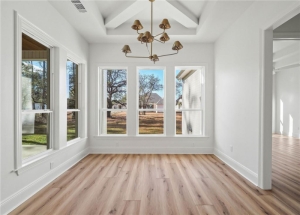US Mortgage Rates Continue to Decline, Offering Relief Amidst Housing Affordability Challenges
In a welcome development for prospective homebuyers, US mortgage rates extended their downward trend this week, providing a respite in the face of the most challenging housing market affordability since the 1980s.
According to data released by Freddie Mac on Thursday, the 30-year fixed-rate mortgage rate dipped to an average of 6.67% in the week ending December 21, down from 6.95% the previous week. This marks the eighth consecutive week of declines, with rates falling below 7% for the first time since mid-August. A year ago, the average 30-year fixed-rate stood at 6.27%.
The sustained decline in mortgage rates has been fueled by expectations of Federal Reserve rate cuts in the coming year. The anticipation of these cuts has contributed to a positive trend, with lower rates drawing potential homebuyers back into the market.
Freddie Mac’s Chief Economist, Sam Khater, noted, “Lower rates are bringing potential homebuyers who were previously waiting on the sidelines back into the market.” Additionally, the positive effects are reaching homebuilders, as evidenced by a rise in confidence and an increase in new home construction levels.
The recent surge in rates, which had exceeded 7% in mid-August and peaked at 7.79% in October, seems to have subsided. The consecutive weeks of declining rates indicate a shift away from the highest mortgage rates of this cycle, offering encouraging news for aspiring homebuyers.
The Federal Reserve’s indication of potential rate cuts in 2024 further supports the expectation of continued decline in mortgage rates, as stated by Lisa Sturtevant, Chief Economist at Bright MLS. While the Fed doesn’t directly set borrower interest rates, its actions influence them, with mortgage rates closely tracking the yield on 10-year US Treasuries.
Projections from Bright MLS suggest that the average fixed-rate mortgage rate could fall to 6.5% by mid-year and decrease further to 6.2% by the end of the next year. Lower rates are anticipated to enhance affordability, with potential monthly savings on mortgage payments for homebuyers.
However, despite the positive impact of lower rates on affordability, a significant obstacle persists – a shortage of housing inventory. The lack of available homes continues to keep prices high and rising, affecting the ability of young buyers to enter the market.
Sturtevant highlighted, “Young buyers are having to delay homebuying as it takes them longer to save for a downpayment and they often have to make offers on multiple homes before they are successful. Many first-time homebuyers have been priced out of the market altogether.”
While lower rates are expected to improve affordability, challenges remain. A report from Redfin reveals that just 15.5% of homes for sale in 2023 were affordable for the typical US household, the lowest share on record. This decline is attributed to both a drop in overall listings and the impact of elevated mortgage rates and high home prices.
As the market cautiously adapts to incremental improvements in affordability, it’s acknowledged that the journey back to balance will be gradual. Mortgage rates and home prices, currently above pre-pandemic levels, are projected to remain elevated through the coming year, maintaining pressure on prices as buyer demand increases.
Realtor.com’s Senior Economic Researcher, Hannah Jones, observed, “Though recent data signals a shift towards a more hospitable housing market, the return to balance will be slow.” Despite the challenges, each incremental gain in affordability is seen as a positive step, gradually thawing the market and offering hope to prospective homebuyers.


